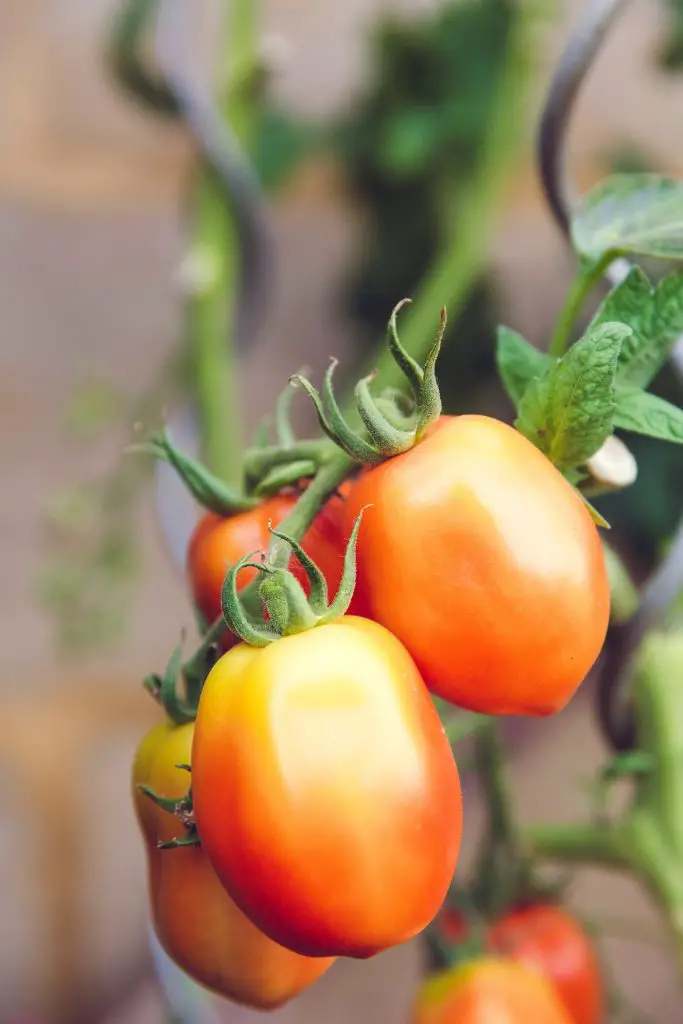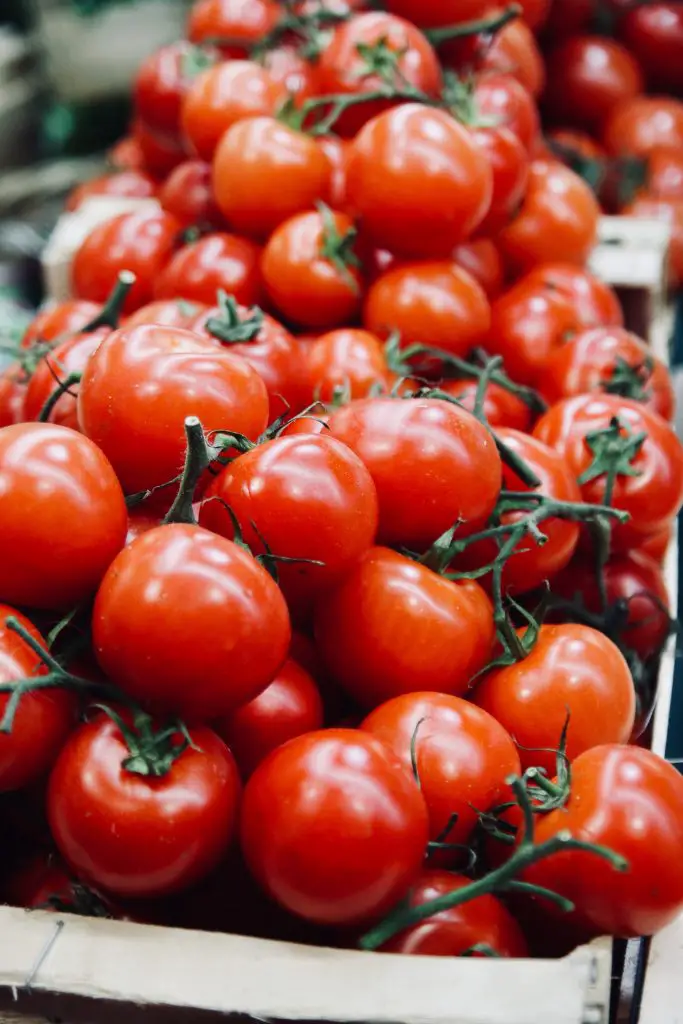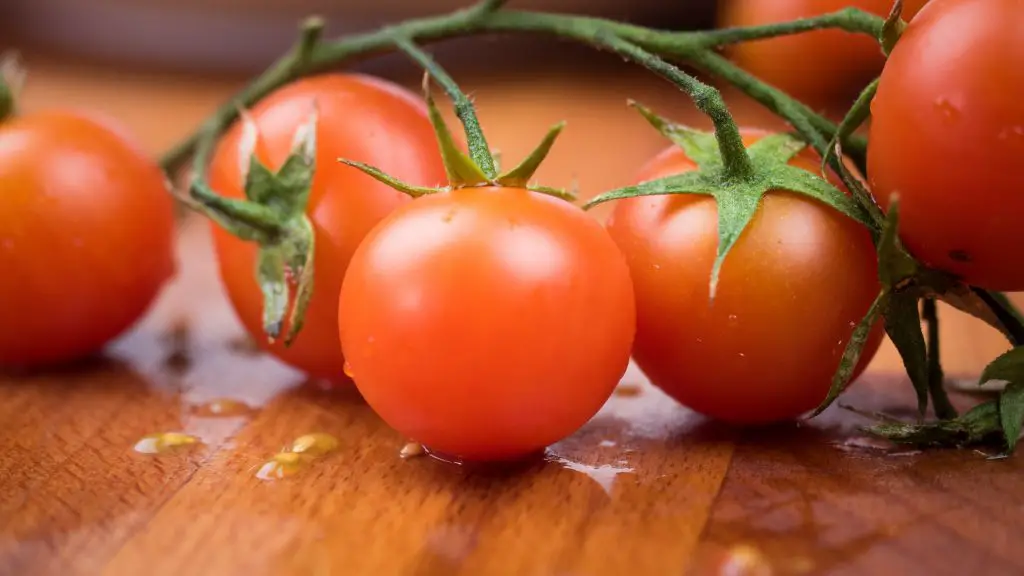How Tall Do Cherry Tomato Plants Get? Tomatoes are one of the most popular plants to grow in the vegetable patch. Homegrown tomatoes taste so much better than store brought tomatoes so it is well worth the effort. But how tall do the plants get and what sort of support structure is required to keep the plants upright?
Cherry Tomatoes can get up to 10 to 12 ft (3 metres) tall if they are an indeterminate variety. Indeterminate varieties, which are sometimes referred to as vine tomatoes, will continue to increase in height throughout the season. However, if they are determinate varieties, which is less common, they will only reach a maximum height of around 4 ft.
This extended height means that most of the commercially sold tomato cages and stakes are generally not tall enough to really maximize the tomato yield as the plant quickly outgrows the support structure. However, if you have limited space in your garden the size of the tomato plant can be controlled by pruning it. This will make the plant more manageable but it will also limit the size of the yield.
The alternative is to use either temporary fencing panels or concrete reinforcing mesh which is typically 6 to 7 ft tall to support the tomatoes. This type of support allows the tomato plant to grow up to the top of the support, then bend over the top of the support and grow back down the surface of the fencing. This cannot be achieved easily when using tomato stakes.
Allowing the plant to continue to extend its length allows the plant to maximize the volume of tomatoes that can be produced and also extend the harvest period.

How Do Tell If A Tomato Is Determinate Or Indeterminate?
To tell if the plant is determinate or indeterminate the easiest way is to check the tag of the seedling or seed packet. In some cases, the information will be provided but not always.
If not it may be necessary to examine the plant as its growing. The most obvious sign is the height of the plant. indeterminate varieties are much taller and generally produce long branches that have minimal foliage whereas the determinate plants have a compact bushy growth habit that is anywhere between 2-4 ft tall.
The second indication is the growth of suckers at the base of your tomato plant. They can also at a 45-degree angle between the main branch and a side stem. These suckers only occur on indeterminate plants and need to be removed to aid in maximizing the volume and quality of the fruit.
Allowing suckers to grow can cause issues with air circulation, sunlight, which can make the fruit less likely to ripen, and increase the chance of disease.
The third indicator is the number and position of the flowers on the plant. Determinate varieties produce flowers at the end of the branch, which signals the stem to stop growing.
Additionally, determinate varieties produce a lot more flowers all at once compared to indeterminate varieties which flower throughout the season.

How To Grow Tomatoes
Tomatoes are a tender frost-sensitive plant that performs best in a warm climate. For those living in regions where the peak summer temperatures are relatively low and the growing season is short, it is important to plant the seeds as early as possible.
Typically the earliest that seeds can be planted undercover is around 4 to 6 weeks prior to the last frost. At this early stage, it will be necessary to store the trays indoors in a warm location that is at least 60°F (16°C). As the temperature of many indoor locations can dip at night it is best to use a heated propagation tray.
Heated propagation trays are relatively inexpensive and do an excellent job of controlling the temperature of the soil particularly when the tray has a dome on top as this helps to regulate both the temperature and humidity of the environment, to see the latest price on Amazon click here.
When planting tomato seeds they should be planted at a depth 0.5 inches (1 cm) in seed raising mix. The seedlings should start to emerge 7 to 10 days later in favorable conditions and will typically take around 6 weeks to reach a sufficiently large size to be planted out into the garden.
As Tomatoes are frost-sensitive this should only be done after the last frost of the season. It is also worth noting that rushing to plant your tomatoes out early while the weather is cool often gains you little in the way of an early harvest as the growth rate in the early part of the season is slow. If there is any doubt about the risk of frost it is better to hold back on planting or use a cloche or a row cover.
When conditions are warm enough seedlings should be spaced approximately 16 to 20 inches (40 to 50 cm) apart in a sunny location that gets at least 6 to 8 hours of sun a day.
In terms of soil conditions, tomatoes need nutrient-rich soil with plenty of organic matter. Additionally, the soil should be moist and slightly acidic, pH of 6.2 to 7.0. To learn how to test and adjust the pH of soil go to https://planyourpatch.com/why-is-ph-important-in-soil/ for more information.
When planting the tomato seedlings it is advisable to also install a support structure at the same time as it avoids the need to disturb the roots later on. As discussed earlier it is best to use tall trellis rather than single tomatoes stake as it enables greater support to be given to the plant, particularly in the latter part of the season when the plant is getting quite tall.

Caring For Tomato Plants
Once the tomatoes have been planted in the garden it is important to regularly water the Tomatoes and remove any side shoots to prevent the plant from becoming a tangled mess. Side shoots will appear consistently throughout the life of the plant and at the height of summer will grow quickly, as such it is necessary to remove suckers once a week to ensure you stay on top of things.
It will also be necessary to regularly tie up the plant to ensure it remains supported as the fruit does become heavy over time. You can expect Tomatoes to take approximately 100 days to produce fruit from the date of sowing however, this can vary depending upon the variety from 80 days until around 120 days. If you are purchasing seedlings, the fruit will be ready in around 60 to 70 days. The harvest period for Tomatoes generally lasts 6 to 8 weeks but can last longer depending upon the climate you live in climate.
Related Articles
Are Grafted Tomatoes Really Worth The Money?
What is the Difference between a Determinate or Indeterminate Tomato?
Do You Need To Prune Indeterminate Tomatoes?
How Many Tomatoes Can You Get From One Plant?
Why Do Cherry Tomatoes Taste Better Than Regular Tomatoes?
How Can You Tell If A Tomato Flower Is Male Or Female? And How To Hand Pollinate Them.
Is It Too Late To Plant Tomatoes? And How To Make The Most Of Summer
Can You Plant Seeds From A Store Bought Tomato? (Is It Possible?)
